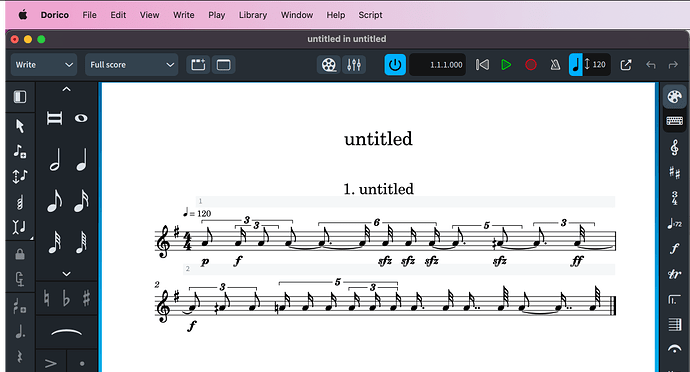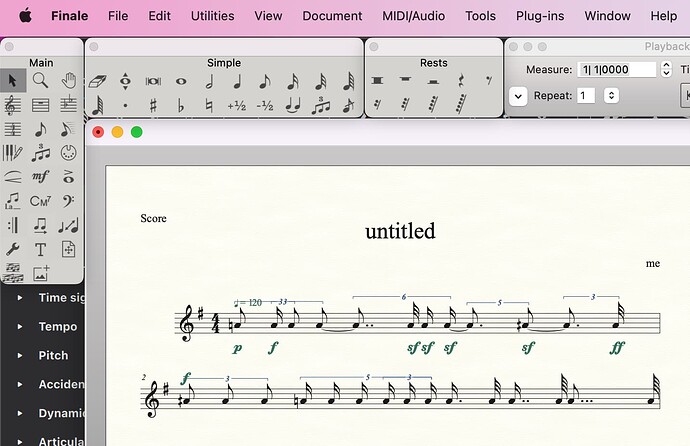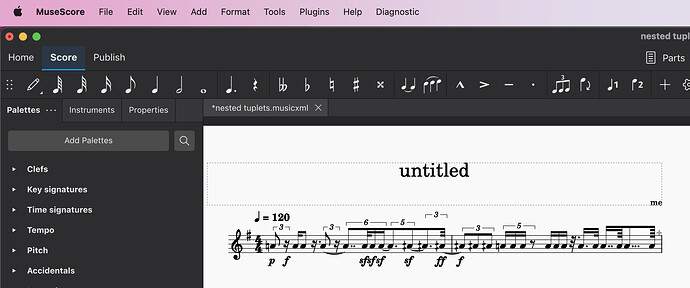Thanks for a lot of information.
I am ashamed that I do not understand Haskell, but I will try to learn what I can take from it.
I feel it somewhat strange that sc-users do not make the libraries to get scores for sclang, but for other languages…
Anyway…
Yes, it is!
I have implemented simple tuplets and nested tuplets. In Dorico and Finale, both are decoded and appear as expected. In MuseScore, nested tuplets are not decoded and displayed correctly.
Below is the updated function:
https://www.dropbox.com/scl/fi/dvi6kyywk90v5uqxk6o8i/musicXMLgenerator-eighth-tone.scd?rlkey=112yg82qkvuowam9ut83yu5bu&dl=0
Below is the test code:
(
~score8 = [
( title: 'untitled', composer: 'me', rights: '©'),
(
bar: 1,
p1: (
lbl: \,
atr: (
key: [1, \major],
time: [4, 4],
staves: 1,
clef: [[\g, 2]]
),
v1: [
[\t, 120],
[\a4, [\e, 3, 2, \e], \p],
[$|, [[\x, 3, 2, \x]], \f],
[$|, [[\e, \]], \f],
[$|, [5, \], \j],
[$|, [\De, 6, 4, \x]],
[$|, [\t], \sf],
[$|, [\x], \sf],
[$|, [4, \], \sf, \j],
[$|, [\de, 5, 4, \x], \J],
[\aqs4, [\e, \], \sf, \j],
[$|, [\de, 3, 2, \e], \J],
[$|, [\t, \], \s2, \j]
]
)
),
(
bar: 2,
p1: (
v1: [
[\s1],
[\aqs4, [\e, 3, 2, \e], \J],
[$|, [\e]],
[$|, [5, \]],
[\a4, [\x, 5, 4, \x]],
[$|, [\x]],
[$\\],
[$|, [[\x, 3, 2, \x]]],
[$|, [[\x]]],
[$|, [[\x, \], \]],
[$|, \dx],
[$|, \t],
[$|, \Dx],
[$|, \i],
[$|, \Te],
[$|, \i],
]
)
)
];
~exportXML.(~score8, "~/Downloads/nested tuplets.musicxml".standardizePath, 'MuseScore 4')
)
The results in Dorico Pro 4, Finale 27 and MuseScore 4 are as follows:
I think the basic features are done, but I am still not sure if the way of notating the score is good enough. I have other simpler ideas to notate them… but still not sure…


